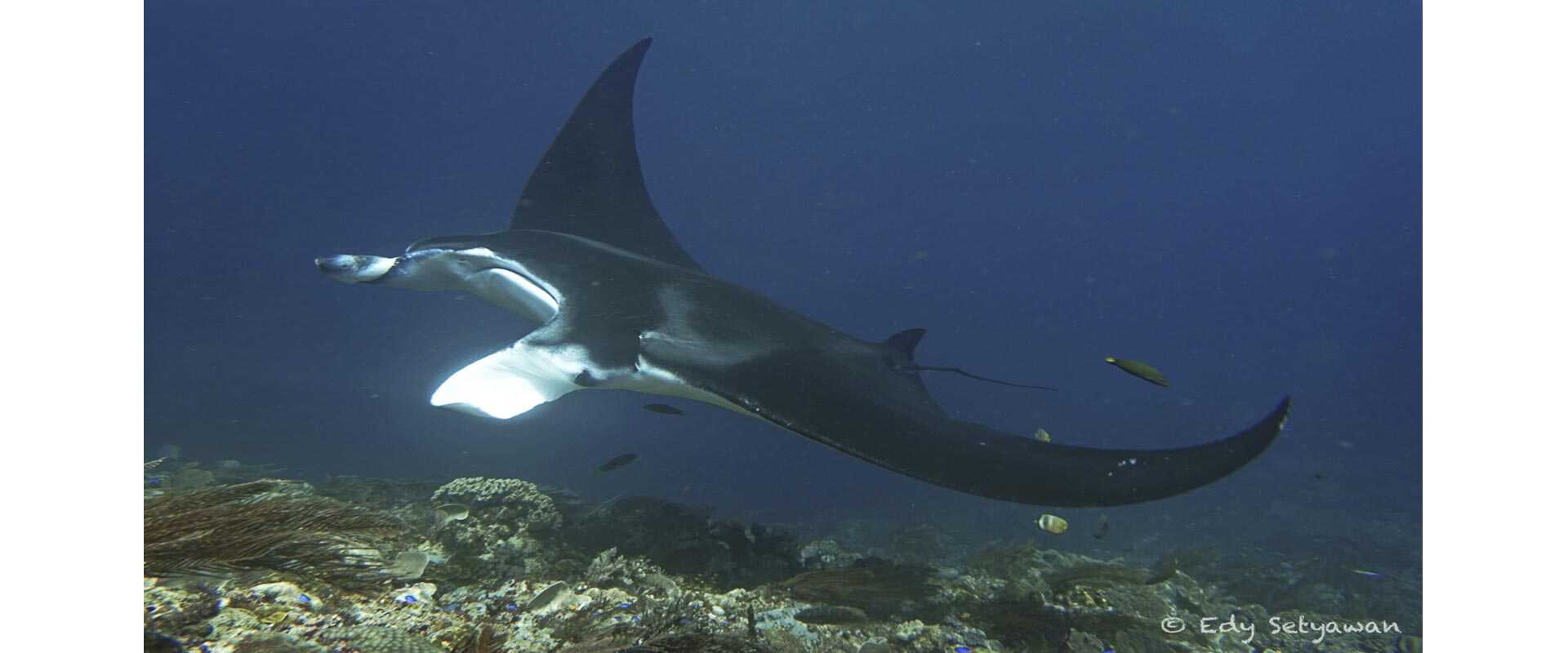Natural History of Manta Rays in the Bird’s Head Seascape: A new study by Edy Setyawan, et al.
Natural history of manta rays in the Bird’s Head Seascape, Indonesia, with an analysis of the demography and spatial ecology of Mobula alfredi (Elasmobranchii: Mobulidae)
by Edy Setyawan, Mark V. Erdmann, Sarah A. Lewis, Ronald Mambrasar, Abdi W. Hasan, Sabine Templeton, Calvin S. Beale, Abraham B. Sianipar, Rafid Shidqi, Hendrik Heuschkel, Orgenes Ambafen, Muhamad Izuan, Mohammad Fakhry Prasetia, Hidayati Azizah, Ismu N. Hidayat, Defy N. Pada, Andreas Muljadi, Rebecca Pilkington-Vincett, Dharmadi, Florencia Cerutti-Pereyra
Summary by Edy Setyawan:
Our team of elasmobranch scientists in the Bird’s Head Seascape (BHS) are constantly at work investigating the secret lives of the globally significant populations of manta rays in the region.
In the latest paper, our team document the natural history of manta rays in the BHS and describe the demographics and spatial ecology of reef manta rays using underwater and aerial observations, a comprehensive photo-ID database, and passive acoustic telemetry. In summary, manta rays were recorded from 127 sites across the BHS, including 70 aggregation sites (cleaning stations and routine feeding aggregations), with the largest feeding aggregation recorded consisting of 112 reef manta rays in the Dampier Strait in the Raja Ampat archipelago. A total of 642 individuals (46.7%) was sighted at least once between 2004 and 2019, with the two most sighted individuals registering 67 and 66 sightings over periods of about 12 years.
Importantly, 217 females were observed to be pregnant at least once, with one having 4 consecutive pregnancies from 2013–16 (and a total of 5 pregnancies in 7 years) and 15 with at least two consecutive-year pregnancies. Four reef manta ray nursery sites were identified with a consistent presence of numerous young-of-the-year, suggesting the importance of protection to these nurseries.
The fact that the majority of the manta sites are located within marine protected area network indicates that Raja Ampat and BHS MPA network are critical for the conservation of manta rays in West Papua.
If you have photos of manta rays taken in Raja Ampat or BHS waters, we encourage you to send your photos to our scientists. Your manta photos are important and valuable for the long term viability of these magnificent creatures!
To read the complete article click here, Natural History of Manta Rays in the BHS!





































